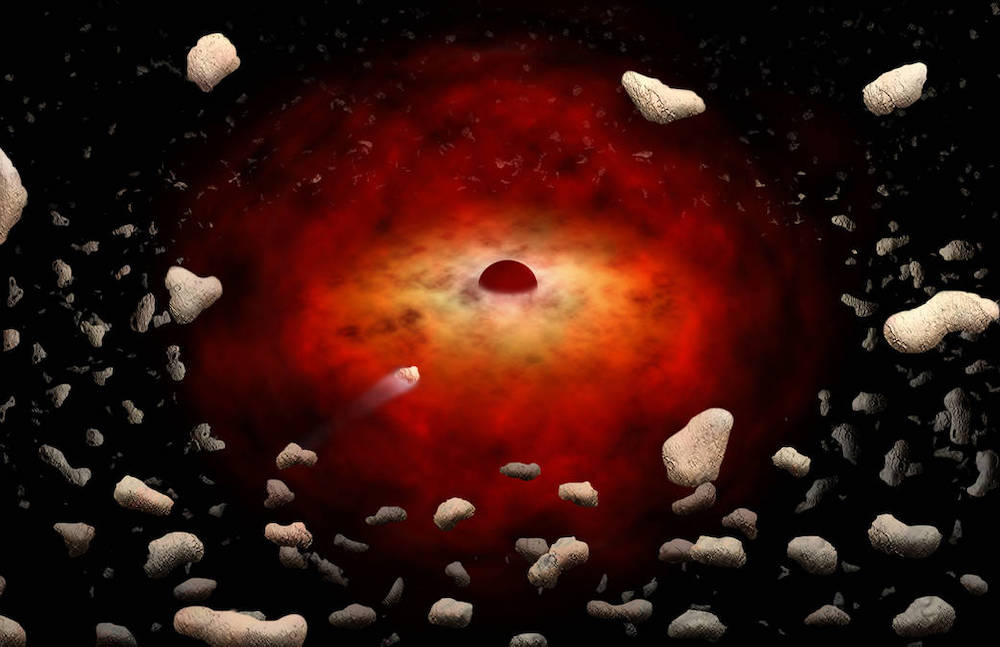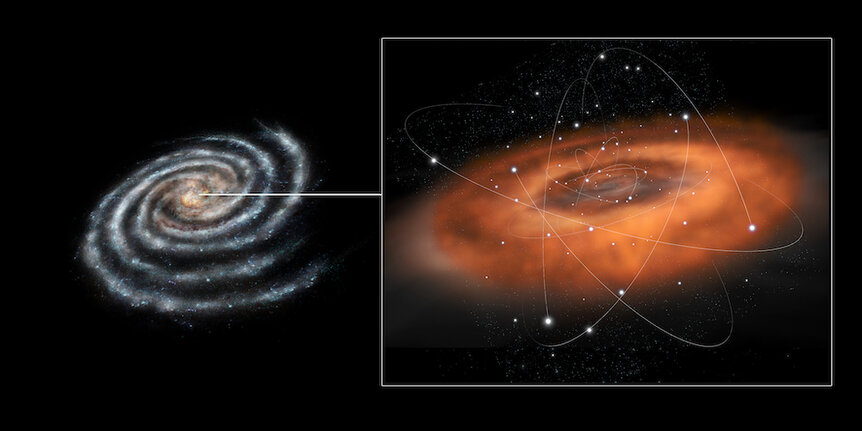Create a free profile to get unlimited access to exclusive videos, sweepstakes, and more!
Why does our black hole have a flaring temper?
Sgr A*, our supermassive black hole, keeps flaring, and we could soon find out what sets it off.

Remember the gasp heard around the internet when the Event Horizon Telescope (EHT) revealed the first images ever of the region surrounding a supermassive black hole in the galaxy M87? It could happen again, and this time, with our own black hole.
In the center of the Milky Way’s active galactic nucleus (AGN) lurks Sgr A* (pronounced “A-star”), a supermassive black hole that has shown some unusual behavior. When black holes feed on the star stuff in their accretion discs, they tend to brighten for stretches of time, and dim or go dark when there isn’t as much fuel available. Sgr A* doesn’t just have periods of brightness and shadow. It is constantly flaring — a mystery that scientists are eager to investigate.
It took eight radio telescope facilities on Earth to capture the image that was burned into everyone’s minds back in 2019. While Sgr A* is closer than the M87 black hole, it is also dimmer, and will be more challenging to catch during a flare. EHT is soon going to get a hand from the infrared vision of the James Webb telescope, scheduled to launch this December. But why is the Milky Way’s supermassive black hole the only one that has been found to keep flaring?
Researcher Farhad Yusef-Zadeh of Northwestern University, who is the principal investigator for Webb’s upcoming observations of Sgr A*, has an idea.
“When you look at black holes much further away, you are looking at a larger region,” he told SYFY WIRE. “Stars in the vicinity of the black hole make it difficult to see small variations in intensity from the black hole. With more distant black holes, the flux of the radiation decreases as the square of the distance.”
Starlight could be obscuring black holes that behave like Sgr A* (above, rendered in the Milky Way at left, and up close at right) but haven’t been caught. There is also the issue of how long a black hole will stay bright and how long it goes dim. As particles accelerate to high energies around the black hole temporarily, or very temporarily in the case of Sgr A*, light emissions intensify. Many other black holes out there will increase and decrease in luminosity over longer periods of time, possibly millions of years. This is why there is so much confusion over how many flaring black holes really exist. Sgr A* is just especially erratic.
When Webb joins forces with EHT, it will bring with it the power to capture data in two infrared wavelengths, not only at the same time but over extended periods of time. Its position beyond the Moon also saves it from the light pollution that plagues observations closer to Earth. While we shouldn’t expect another viral image right away (if at all), Webb will be able to watch Sgr A* flaring over and over again, beaming back data that can be used by scientists to determine what the unknown force behind the flares actually is. It might have something to do with magnetism.
“The mechanism driving the flares is not clear, but it could be the reconnection of magnetic fields within the accretion disk of the black hole producing the flares,” said Zadeh.
Which telescope sees what is going to depend on the amount of flaring. Minimal flares could be observed by EHT alone, but a barrage of flares is going to need both EHT and Webb, since Webb can remove other emissions that interrupt the view and then put together an image from what EHT saw. Could that end up breaking Twitter? Possibly. It depends if the telescopes can capture the right image at the right time. Somewhere in the many images they will send the research team over the course of their observations, there might be an explanation for all the flaring.
Zadeh is eager to find out what the flares can tell us both about the black hole at the center of our galaxy and those hiding in galaxies millions and billions of light years away.
“I think it is important to know if flares are telling us about material flowing out like an outflow from the black hole or accreting onto it,” he said. “This may have implications in our understanding of more distant black holes which vary but at a longer timescale.”



























